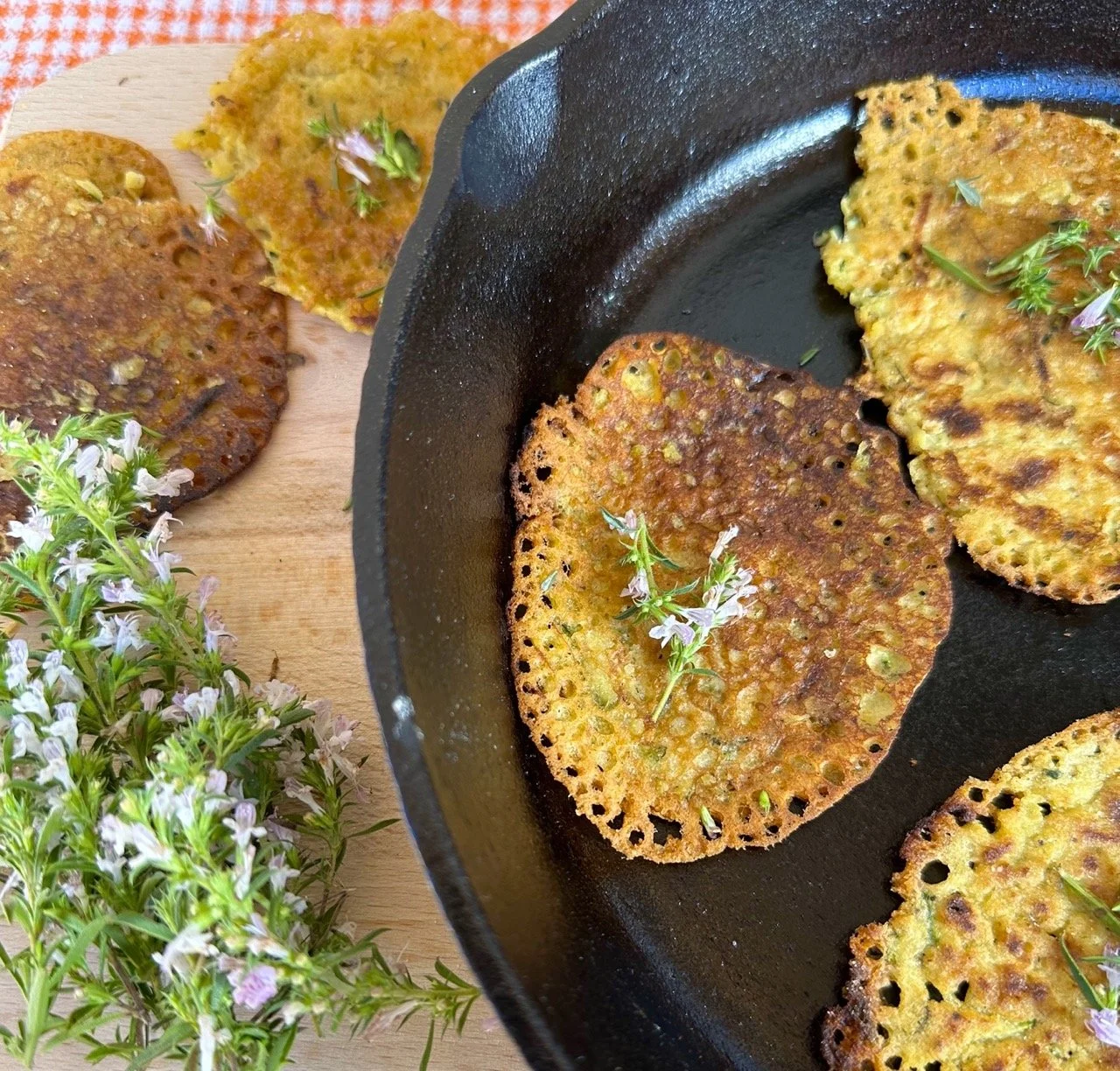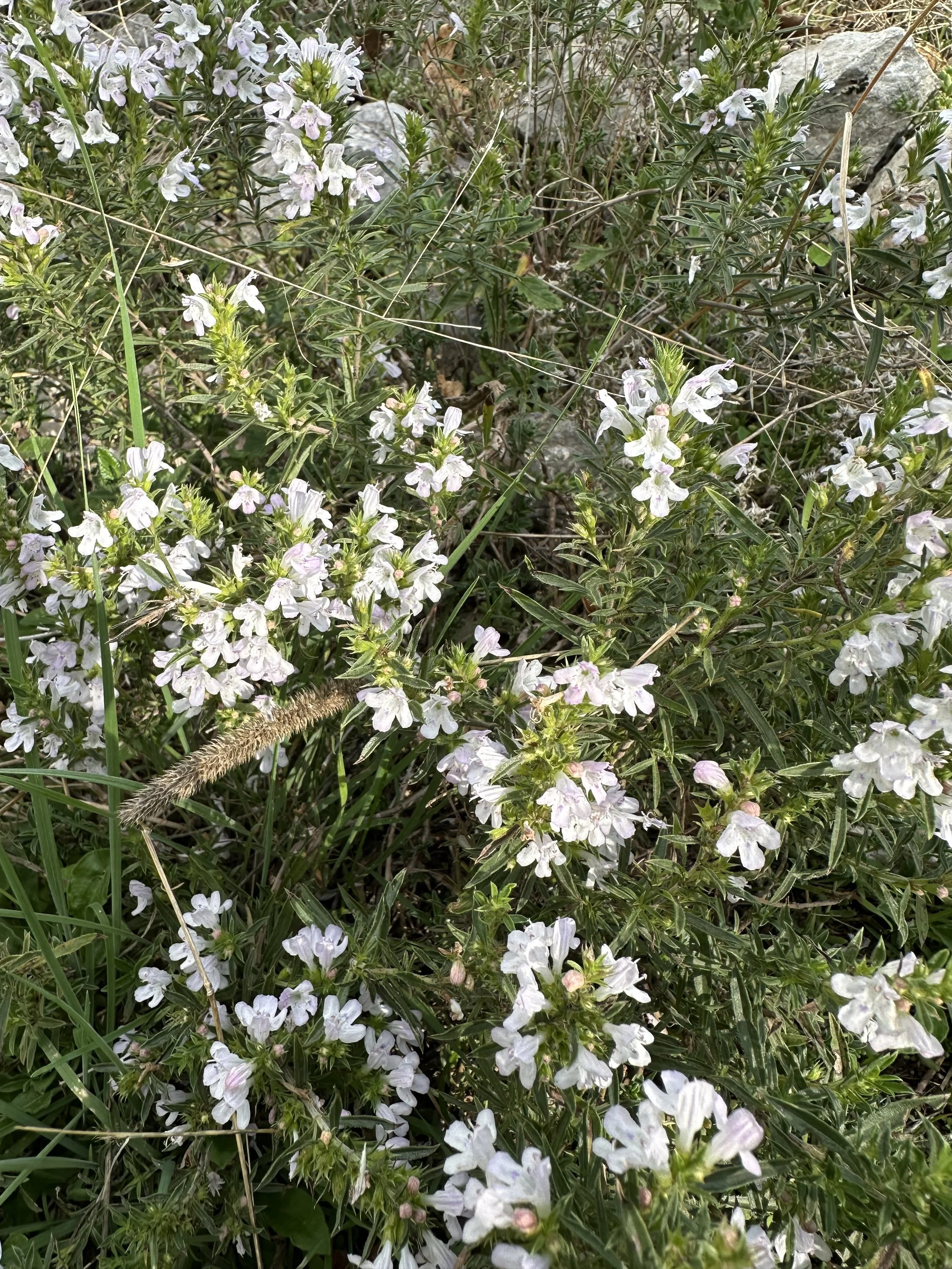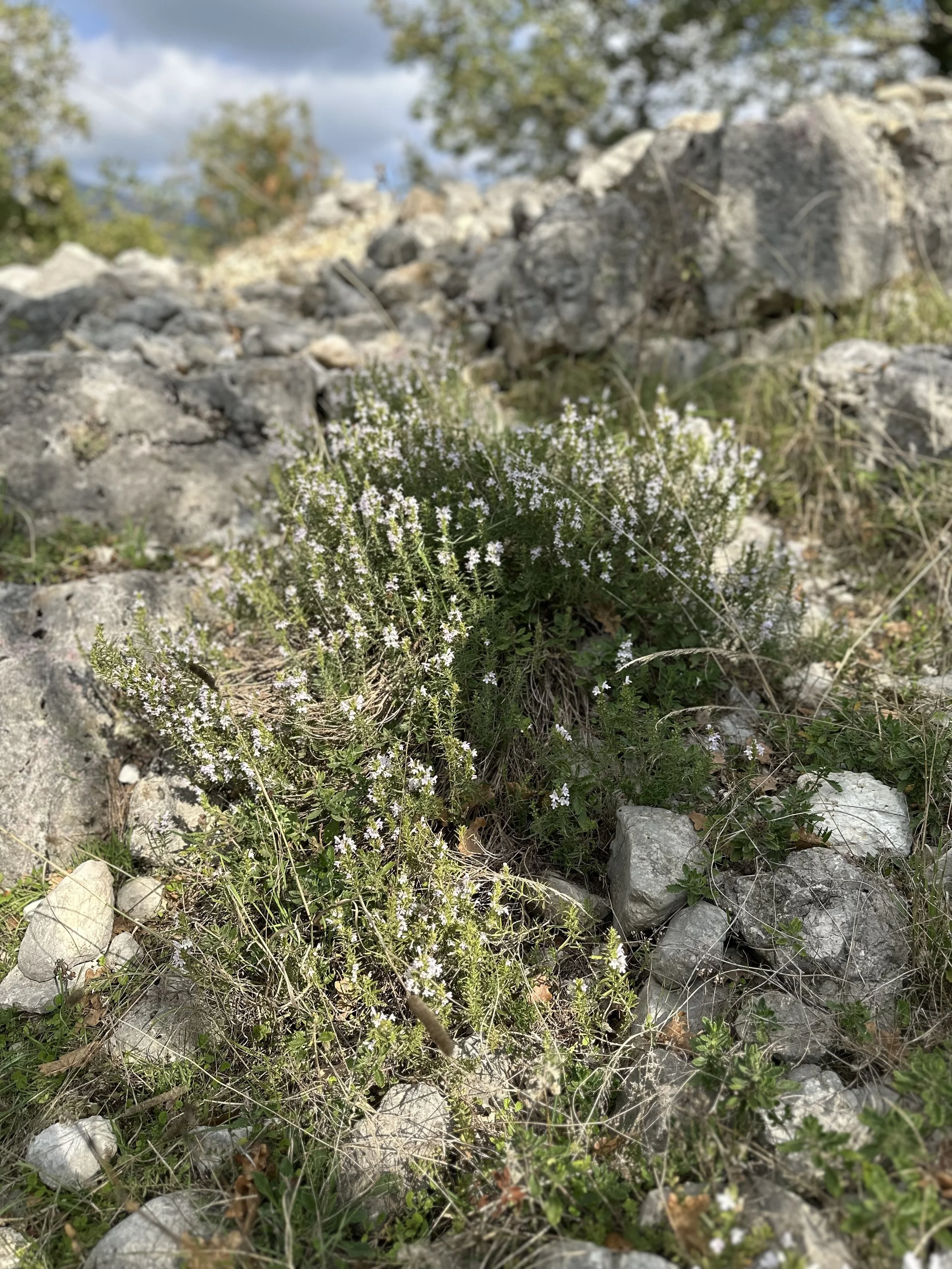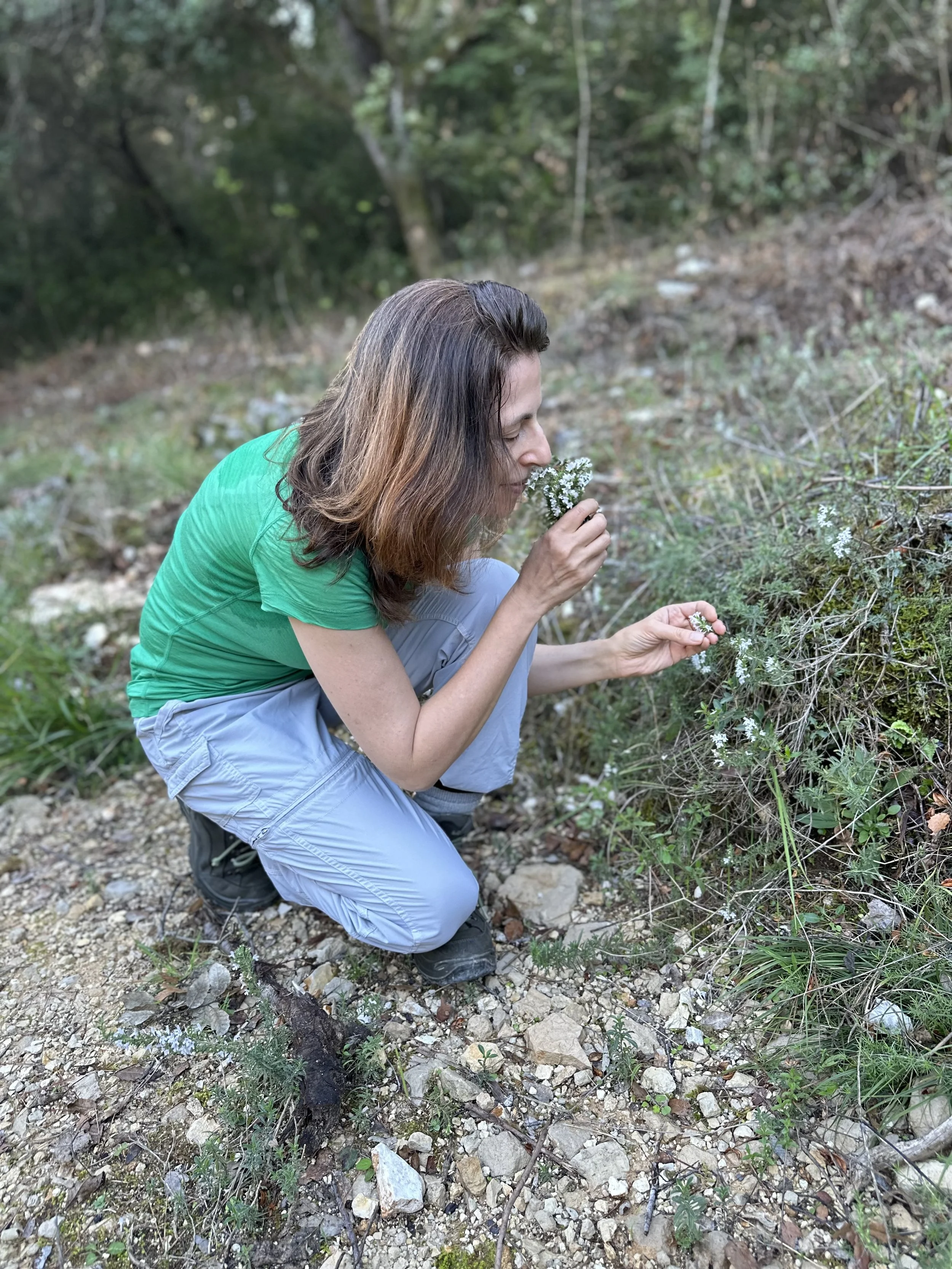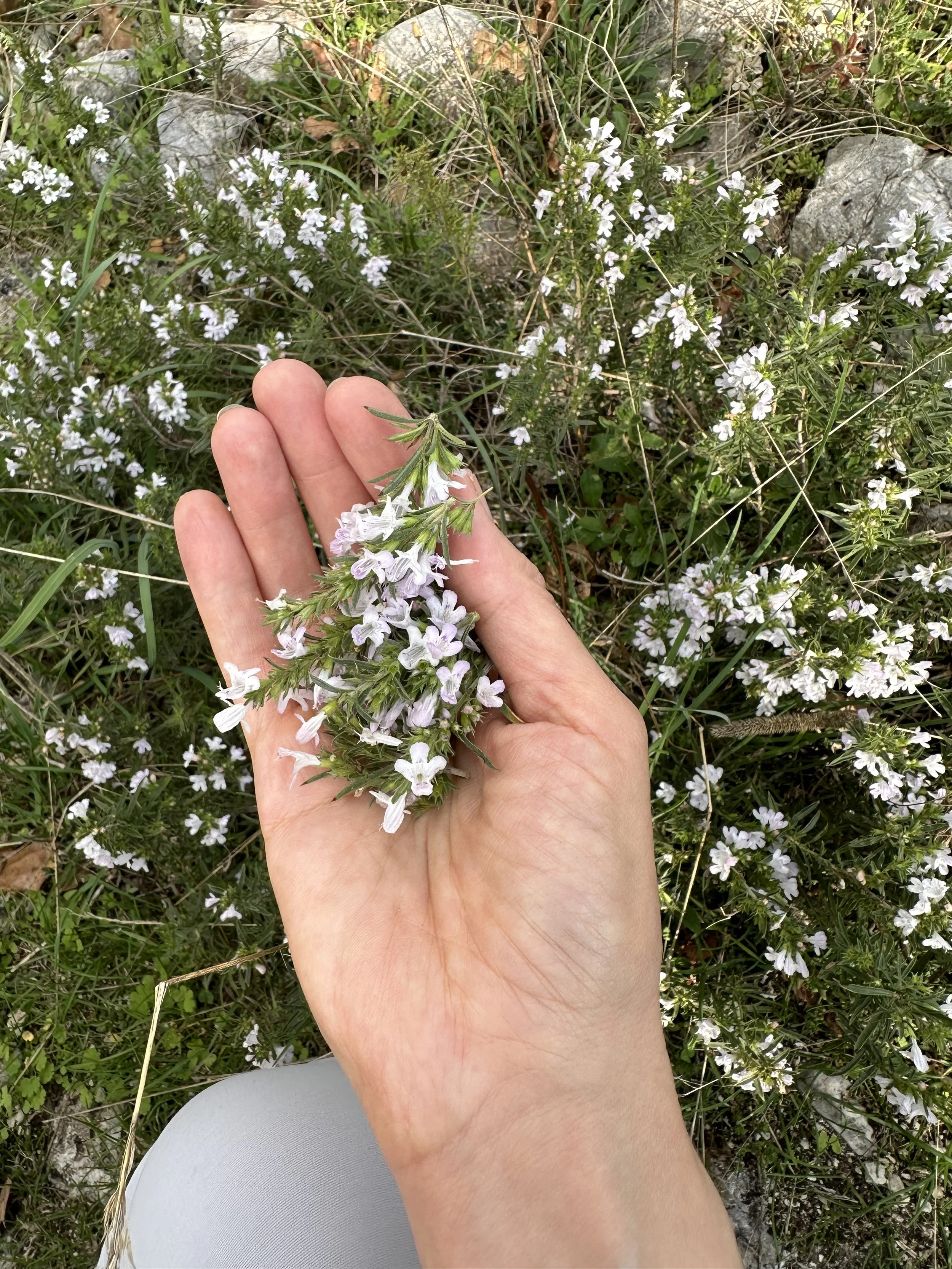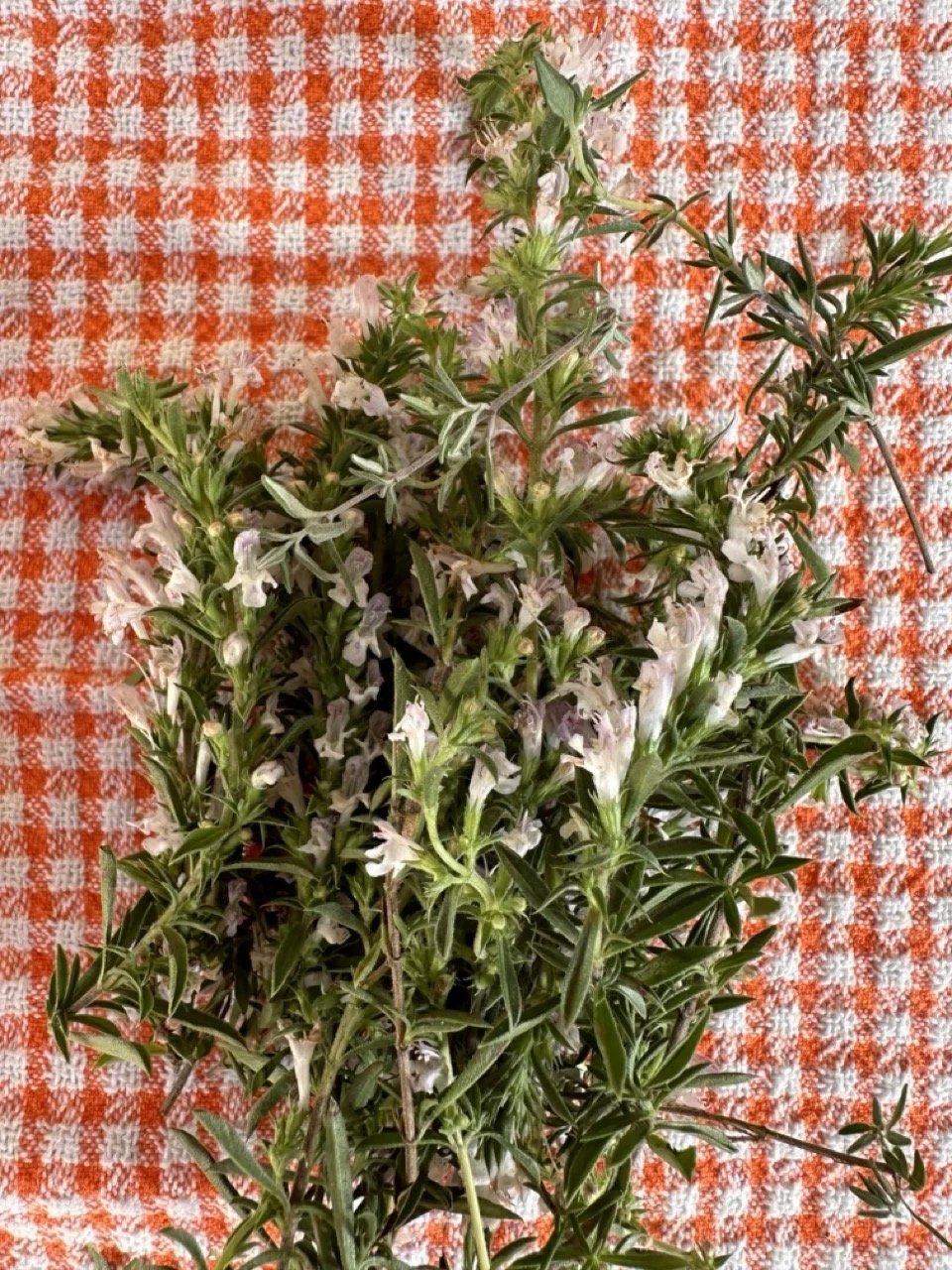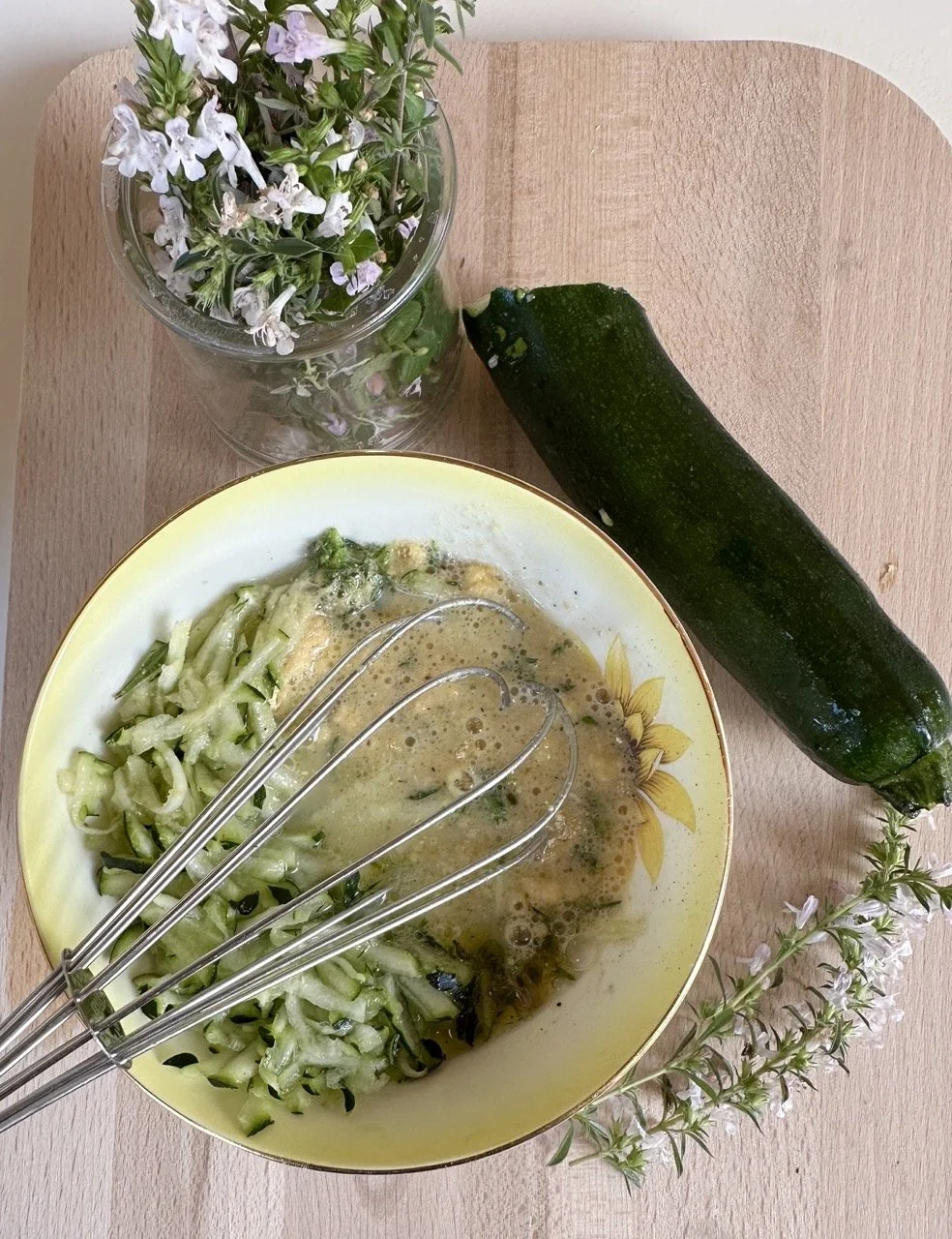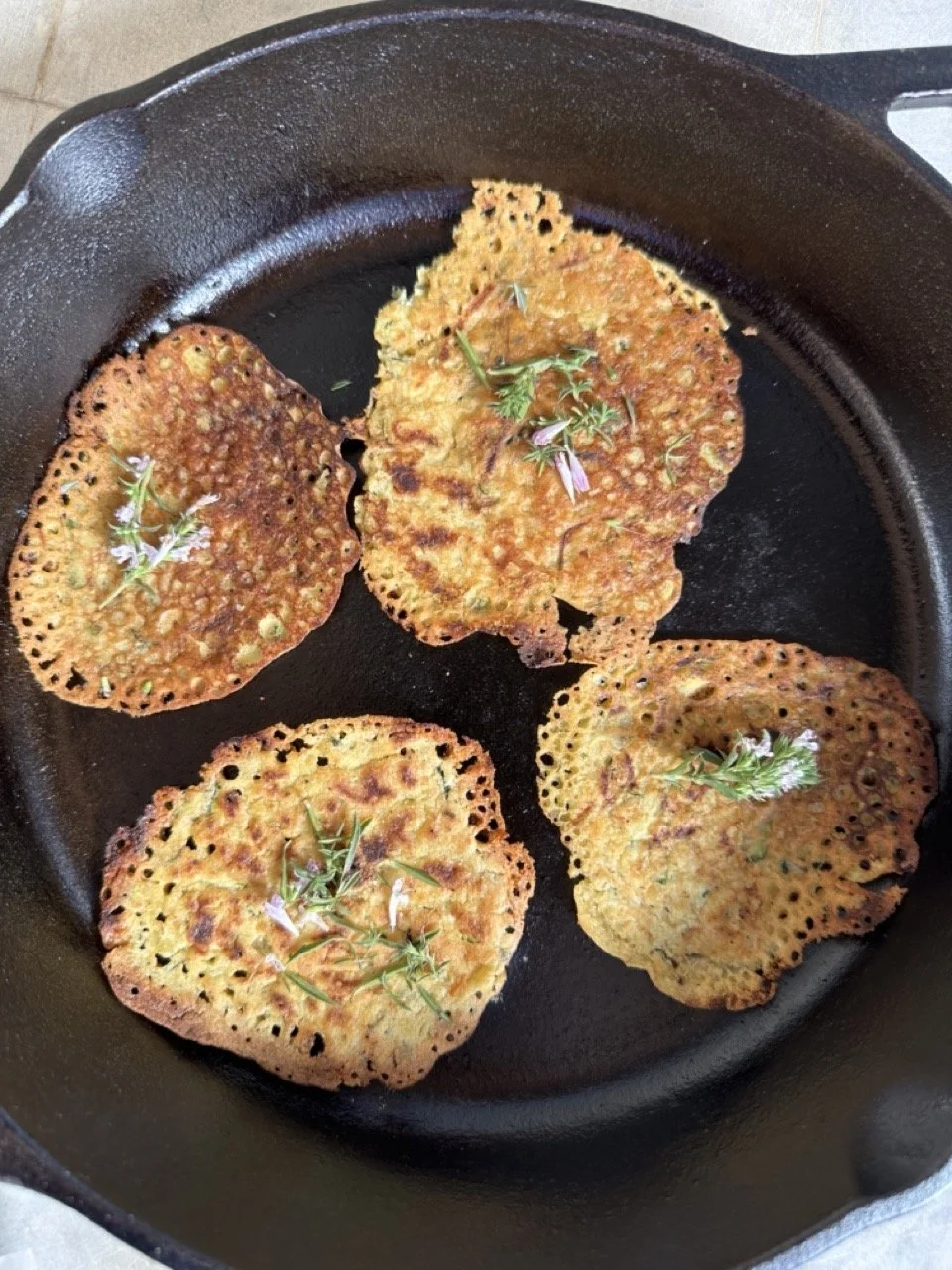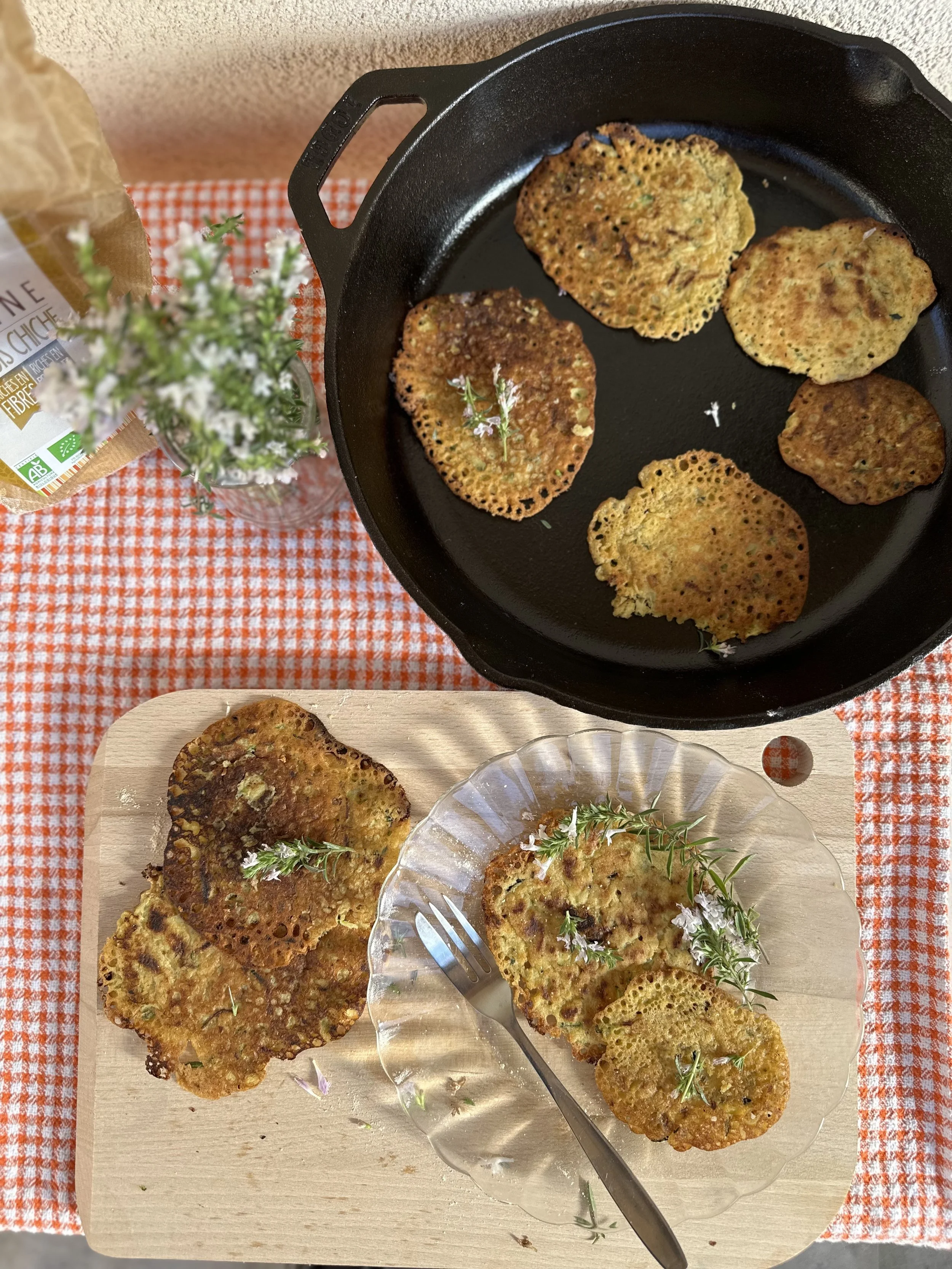Herbal Socca
Now that we’ve said our hellos, I’d love to introduce you to my latest herbal friend, which I spotted recently while in the south of France on a hike in Gréolières. I knew it wasn’t thyme as that blooms in the region in May and the flowers are purple, but it was a lookalike and appeared to be a close relative. After fiddling with a wildflower app, I discovered I was staring at Winter Savory.
I remember having a bottle of savory in my spice cupboard many years ago, but it was never used and eventually the faded contents were thrown out. I also had a vague awareness of savory’s existence because it is one of the herbs used in Herbes de Provence, but more than that I had no clue of its personality. Meeting it on the mountain was quite a thrill and of course, we became fast friends after I sniffed and tasted it.
Winter savory’s flavor is bright, pungent and thyme like, but also has an echo of marjoram and pine. Its leaves are also quite pointed and sharp, so it's not ideal for pocket harvesting! I gathered a small bunch and stuffed it in my backpack looking forward to the kitchen experiments that would unfold back at the apartment.
What Is Savory?
Known as sariette in French, the latin name for savory is Satureja. Winter Savory is Satureja montana and summer savory is Satureja hortensis. Savory is part of the mint family, and native to the Mediterranean. Both summer and winter savory are similar in properties, although the medicinal actions are said to be stronger in the winter variety. The herb is warming and drying in quality and it's pungency makes it a perfect choice for the onset of a head cold.
It's packed with polyphenols and flavonoids and 21 different volatile oils including thymol, geraniol and carvacrol. Thymol is the main phenol in thyme and used for it’s antimicrobial benefits, and carvacrol is a another aromatic monoterpene found in essential oils that may inhibit cancer cell growth in lung cancer, according to this study.
Savory has traditionally been used as a herbal medicine to lower blood sugar and cholesterol. It’s used for pain relief and digestive spasms including gas and bloating. It is antiviral, antifungal, antibacterial and so much more.
The savory that is sold as a culinary herb in the supermarkets is actually summer savory, and its flavor is apparently milder and sweeter than its winter counterpart. Learn more about (summer) savory in this article.
Socca With Savory
Savory is an easy substitute for thyme, oregano or marjoram in the kitchen and given my location in the south of France, I decided to use it in a traditional Provençal pancake called Socca.
If you’ve never tried Socca, then prepare to make it your new favorite pancake. Traditionally, it’s made with chickpea flour, water, olive oil and salt and pepper and a hot skillet. I make some version of this pancake at least once a week, and today’s version has some grated zucchini and of course the savory I gathered.
The Recipe
1/4 cup chickpea flour
1/2 cup +3 tablespoons boiling water
3/4 teaspoon dried savory or 2 teaspoon of fresh leaves
2 tablespoon grated zucchini
1 tablespoon olive oil
salt and pepper to taste.
Method
Whisk the chickpea flour with the oil and water. Stir in the grated zucchini, salt, pepper and savory. Heat a cast iron skillet and once the pan is hot, brush it with olive oil. Spoon 1-2 tablespoons of the mixture into the pan for each pancake, so that the mixture is about 1/4” thick.
Allow them to bubble and cook and once crispy at the edges and the center is cooked you can flip the pancakes over to crisp the other side. I generally cook them for about 4 minutes on the first side and depending on the heat of the pan, an additional 2-4 minutes on the other side. The pancakes should be fully cooked and crispy on both sides before eating. They are delicious when hot, but if you have some leftover, they can be refrigerated and reheated the next day.
I’d love to hear about your experiences working with this lesser known Provençal herb.
Happy Fall!

